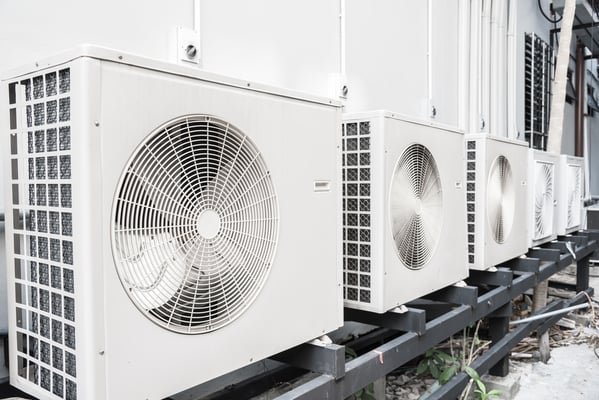Air conditioning systems are typically the largest electrical loads in residential and commercial buildings. Many types of industrial machines consume more energy than air conditioners in factory settings, but refrigeration systems still represent a significant load. In these cases, process cooling is a major expense in addition to air conditioning.
Energy bills in buildings can be significantly reduced by modernizing air conditioning units and other refrigeration equipment. This is especially true in places with hot climates or high electricity rates. However, an air conditioning upgrade requires careful analysis and planning to be effective.
Improve your building's air conditioning system and save on electricity bills.
Having equipment with high nominal efficiency is important, but the air conditioning system must also be specified according to the building's needs. If the system configuration is not suitable for the building, even the most efficient equipment will suffer a loss of performance.
Updating air conditioners according to the building’s needs
Air conditioning systems have many different configurations, but can generally be classified into two main types: unitary and central installations.
Unitary air conditioners are designed for specific areas and have a compact design that includes all necessary components for operation. On the other hand, central air conditioning systems use a mechanical room for the main refrigeration equipment. The cooling effect is provided with ducts and air handlers, and hydronic systems also use chilled water pumps and piping.
- Unitary air conditioners are recommended when areas of buildings have very different operating hours, as the individual systems are independent of each other. A central air conditioning project is most cost-effective when areas of the building have similar cooling schedules.
- Central air conditioning systems with variable speed chillers can reduce their capacity under partial load conditions. However, unitary systems offer the greatest flexibility in applications where cooling schedules do not coincide.
There is equipment with exceptional efficiency for both air conditioning configurations. In unitary installations, variable refrigerant flow (VRF) systems typically offer the highest efficiency. On the other hand, variable speed water-cooled chillers tend to be the most efficient option for a central air conditioning system.
Importance of adequate air conditioning capacity
When dealing with air conditioning design, more cooling capacity is not necessarily a good thing. Larger equipment is more expensive and maintenance costs also increase. Large air conditioners also tend to run on short cycles since they have a lot of available capacity. This intermittent operation causes faster mechanical wear.

Modern chillers and VRF units can reduce their cooling output when their full capacity is not needed. This eliminates the problems of excessive energy consumption and mechanical wear, but unused capacity still represents a wasted investment.
Energy consultants recommend an inspection of the building envelope before any HVAC upgrades. In particular, you should check for insulation deficiencies and air leaks, which increase the cooling load. If these problems are resolved first, the workload on the air conditioning system will be reduced. Therefore, new units can be specified with higher efficiency and reduced rating.
Final Observations
Given that air conditioning is the largest electrical load in most buildings, energy efficiency measures targeting this system can achieve significant savings. The payback period is determined by many factors, including local climate and electricity rates.
If you're considering an air conditioning upgrade, schedule it for a time of year when disruptions will be minimal. Summer is not a good time as there is a high demand for installation and maintenance services. Once the cooling season is over, there will be time to improve cooling systems with minimal disruption. Upgrades are not recommended during the summer as the air conditioning system must stop working and the indoor temperature can become unbearable within a few hours.

